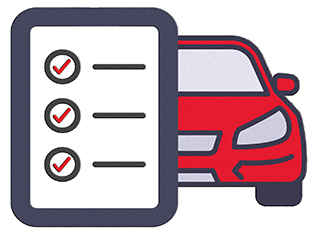What to do to prepare for a car accident?

How to Prepare for a Car Accident
Car accidents are stressful and potentially dangerous events. While we all hope to avoid them, being prepared can make a significant difference in how you handle the situation and ensure your safety.
Here’s a detailed guide on what to do to prepare for a car accident, including examples and interesting facts to provide a comprehensive understanding.

Maintain Your Vehicle
Regular maintenance ensures your car is in the best possible condition to avoid accidents and to function properly if one occurs.
Examples:
- Regularly check your brakes, tires, and lights.
- Ensure your windshield wipers are functioning correctly and your fluids (like oil and coolant) are topped up.
Explanation:
Well-maintained brakes can prevent rear-end collisions. Proper tire pressure ensures better handling and reduces the risk of blowouts. Functioning lights are crucial for visibility, especially at night or in bad weather.
Interesting Fact:

The National Highway Traffic Safety Administration (NHTSA) reports that tire issues are a factor in around 9% of all vehicle crashes.
Have an Emergency Kit
An emergency kit can provide essential items you might need immediately after an accident.
Examples:
- First aid kit
- Flashlight with extra batteries
- Flares or reflective triangles
- Blanket
- Basic tools (screwdrivers, pliers)
- Phone charger
Explanation:
A first aid kit helps treat minor injuries on the spot. Flares or reflective triangles can make your vehicle visible to other drivers, preventing further accidents. A blanket can keep you warm if you have to wait for help in cold weather.
Interesting Fact:

According to a survey by AAA, 40% of drivers don’t carry an emergency kit in their car.
Know How to Use Your Insurance
Understanding your insurance policy can help you navigate the aftermath of an accident smoothly.
Examples:
- Know what your policy covers (e.g., liability, collision, comprehensive).
- Keep your insurance card in your glove compartment.
- Have a list of steps to take to file a claim.
Explanation:
Knowing your coverage helps you understand your financial responsibilities after an accident. Having your insurance card handy ensures you can provide necessary information to law enforcement and the other driver.
Interesting Fact:

In 2020, the average cost of a non-fatal disabling injury in a car accident was $96,200, according to the National Safety Council (NSC).
Know What to Do at the Scene
Knowing the immediate steps to take can protect you and others at the scene of an accident.
Examples:
- Check for injuries and call 911 if needed.
- Move to a safe location if possible.
- Exchange information with the other driver (name, contact info, insurance details).
- Document the scene (photos, witness statements).
Explanation:
Checking for injuries and calling 911 ensures that medical help is on the way. Moving to a safe location, if possible, prevents further accidents. Documenting the scene provides crucial evidence for insurance claims and potential legal proceedings.
Interesting Fact:

According to the NHTSA, failure to move vehicles out of travel lanes after a minor accident can cause secondary crashes, which are often more severe than the initial incident.
Understand State Laws

Different states have different requirements for reporting accidents and handling the aftermath.
Examples:
- Some states require you to report any accident with damage over a certain amount (e.g., $500).
- Other states have no-fault insurance laws, meaning your insurance pays for your damages regardless of who is at fault.
Explanation:
Knowing your state’s laws ensures you comply with legal requirements, which can affect your insurance claim and potential legal consequences.
Interesting Fact:

In states with no-fault insurance laws, each driver’s insurance company pays for their policyholder’s damages, regardless of who caused the accident. This is designed to reduce the number of lawsuits over minor accidents.
Practice Defensive Driving
Defensive driving techniques can help you avoid accidents and stay safe on the road.
Examples:
- Keep a safe following distance.
- Avoid distractions like texting or eating while driving.
- Be aware of other drivers and anticipate their actions.
Explanation:
A safe following distance gives you more time to react to sudden stops. Avoiding distractions keeps your attention on the road, reducing the likelihood of accidents. Being aware of other drivers helps you anticipate and avoid potential hazards.
Interesting Fact:

The NHTSA states that distracted driving accounted for 9% of all fatal crashes in the U.S. in 2019.
Preparing for a car accident involves maintaining your vehicle, having an emergency kit, understanding your insurance, knowing what to do at the scene, being aware of state laws, and practicing defensive driving. By taking these steps, you can handle accidents more effectively and ensure your safety and that of others on the road.
Being prepared doesn’t prevent accidents, but it does make dealing with them less stressful and more manageable. Stay safe!












